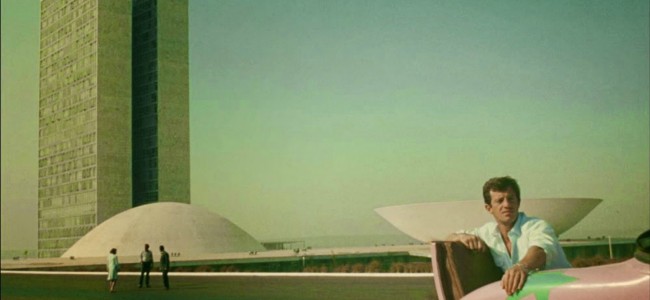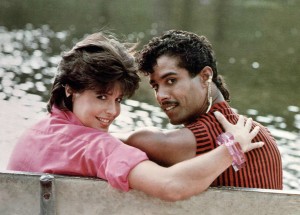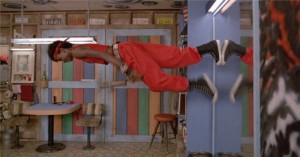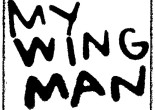
Blu-ray slight return: Electric Boogaloo edition

There are few films that deserve the cult status accorded exceptional cinema as the ‘80s dance films Breakin’and Breakin’ 2: Electric Boogaloo (4/21, Shout! Factory). This duo of hip hop dance movies were both released in 1984 and were quite the profit cows for the then Golan/Globus run Canon Films.
Both film feature Lucinda Dickey (awesome performer who unfortunately made only a handful of films before retiring) as Kelly, Adolfo Quinones (a major choreographer of his time) as Ozone and Michael Chambers as Turbo. While the sequel Electric Boogaloo towers above most films of the dance genre, each film has moments of spectacularly designed breakdance sequences that merge that world with the world of jazz and classical dance moves. This is no danse macabre. These films are shot and edited with the finesses of the best Hollywood films.
Electric Boogaloo has one sequence where Turbo dances in a room that is mounted on a gimbal, with the camera locked into place and capturing the spinning of the room – even though the room doesn’t appear to move. Turbo walks up the sides of walls and dances on the ceiling. His girlfriend enters the room and stands there while Turbo does his slick moves upside down. Only in the two-shot she is tied into place upside down and Turbo is upright. If that sounds familiar it is because it’s a nod to a similar sequence expertly executed by Fred Astaire in Royal Wedding. Only Electric Boogaloo takes this conceit and rocks it to the boundary of cinematic coolness.
Electric Boogaloo is a movie in motion. The dance scenes, and they occur ever ten minutes or so, are so well done. The arm, leg and body moves are action incarnate – you feel like you’re watching a Walter Hill film from the 1980s.
I dare say that these two films would appeal to action fans that don’t usually watch dance films. The kinetic energy on display propels the Breakin’ films like rockets. You don’t have time to notice the thinly stitched plots. Many of the dance sequences are captured in wide shots that give the viewer a feeling for the groove, as opposed to many current dance films (like Step Up) that are quick and choppy in their editing.
Keep on eye in the background too. Ice-T (Tracy Marrow) appears in his first movie roles, and that shaking guy from the Michael Jackson “Beat It” video is doing his thing in a hospital scene.
Also on:
- Class of 1984 (4/14, Scream Factory) proffers an exploitation bent to a story about violence in high school. Director Mark Lester (Commando, Roller Boogie) presents a dark vision of teenagers that’s a cross of Blackboard Jungle and A Clockwork Orange. Perry King and Roddy McDowall arm themselves against their students. Bullets don’t merely fly. It’s all out war. One teacher uses the resources of shop class to saw off the arm of a crazed student.
- Joe 90: The Complete Series (4/14, Timeless Media) continues the release of Gerry and Sylvia Anderson Supermarionation television shows. These puppet adventures are characterized by superb sets and intriguing sci-fi plotlines. At the same time it’s kid stuff. Joe in particular is the son of a scientist. In a weird experimental device that transfers intelligence and skills from a machine to the human brain (hello Matrix) Joe becomes a kind of superhuman. The lad is then recruited by British intelligence as a secret agent. At the end of most eps, Joe is just sitting there, with his father and operator, acting like a bemused kid about to be sent to bed while they drink cognac.
- That Man From Rio and Up To His Ears (4/14, Cohen Media Group) are back-to-back Jean-Paul Belmondo/Philippe de Broca vehicles loaded with extras and in gorgeous Blu-ray transfers. de Broca had been involved with a live action adaption of Hergé’s Tin Tin but the project never materialized. Instead he found a way to channel that kind of intensive stunt driven plot in the story of an on-leave soldier (Belmondo) who gets involved in a globetrotting adventure involving his g.f. (Françoise Dorléac) and a stolen Amazonian statue. Rio de Janeiro of course appears as a character but so does the amazing architecture of Brasília (a pre-planned city then only a few years old). The movie itself is the template for Raiders of the Lost Ark, not to mention Romancing the Stone. Up to His Ears, while based on a Jules Verne story and with exotic foreign locales, is only a shadow of That Man From Rio.
— Michael Bergeron







